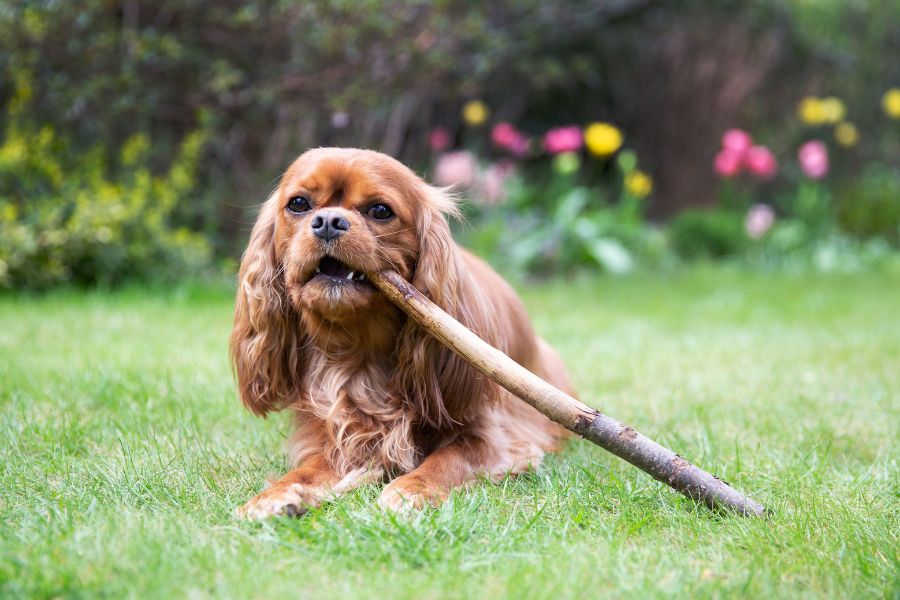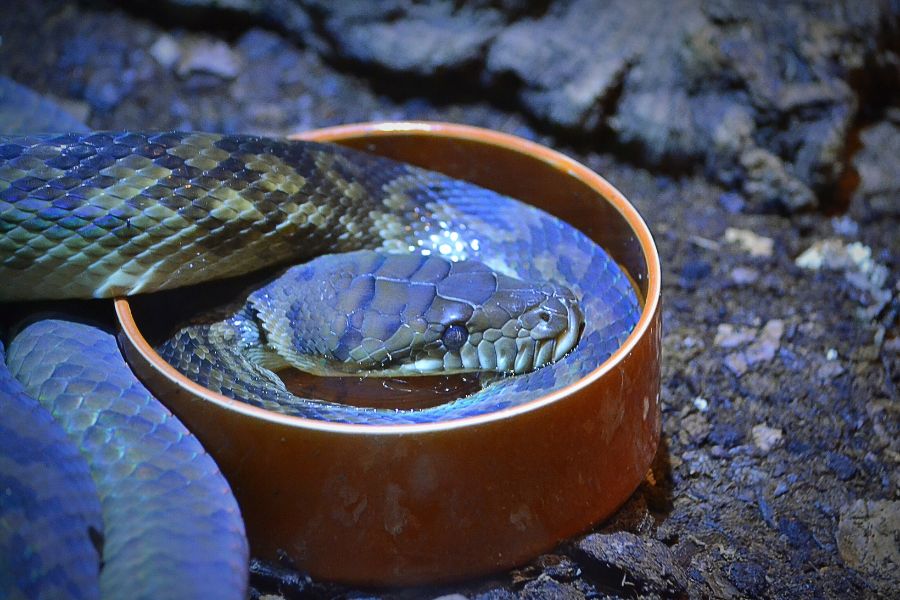One of the problems we have here in central Texas this time of year is snakes and snake bites. With summer vacation around the corner and our kids and pets spending more time outdoors, it’s essential to be aware of snakes. Knowing how to avoid a snake bite is the best way to prevent injury and possibly even death. There are many kinds of snakes hiding in the grasses: Some of them are western diamondback rattlesnakes, Cottonmouths (water moccasin), Copperheads, and Coral Snakes. As the weather warms, they emerge from their dens and slither in tall grasses and gardens. Here are some ways to prevent your dogs from getting bitten this summer.
Keep Dogs on a Leash
When the grasses are tall, and there’s a lot of greenery, snakes can be challenging to spot. Keeping dogs on a leash is the best way to keep them out of shrubs and bushes. Snakes have an easy time blending into their surroundings and slithering on low grounds. A secure leash and harness keep your pets safe from going out of bounds where snakes can slither and strike unexpectedly.
Supervise Backyard play and Keep Small Animals Out
Snakes like to slither around in outdoor gardens and backyards. These sneaky snakes can come up as a surprise to our curious dogs sniffing around their yard. Your yard can be an even more exciting place for your dog to explore if you have small rodents and animals exploring your yard as well. The scent of these small animals can attract snakes to your property that may harm your pets. It’s recommended that you keep small animals out of your yard as best as possible. You can prevent animals from entering your yard through fencing, locking away garbage or waste, and keeping any food wastes out of your yard. Of course, some animals still find ways to get through, so we recommend you supervise any outdoor time your pets may have.

Check Your Pets and Know the Signs
Symptoms of a snake bite can vary depending on the snake that has bitten your pet. Non Venomous snake bites usually leave pain and scratches at the attack site. Be sure to watch your pet if they pay extra attention to a particular area on their body by frequently licking the area or avoiding your touch there. There can also be traces of blood after a bite, so be sure to carefully inspect your dog’s skin under their fur. A venomous snake bite is more obvious to spot. Typically burning and swelling start occurring within 15 to 30 minutes of the bite. There can be bruising, signs of nausea, labored breathing and overall weakness and shaking. Depending on the toxins in the snake, it can lead to neurological symptoms that can be displayed in your pet’s behavior.
Seek Medical Attention
The best way to keep your pet safe from snake bites is to prevent snake encounters. Keeping your pets leashed, supervised, and keeping small rodents out of the yard, can deter snakes from coming near you and your pets. In the unfortunate circumstance that your dog has been bitten, please seek immediate medical attention. Especially if the bite starts swelling and your dog displays symptoms of a venomous bite. If treated early enough, your pet can be saved from the venom spreading through their body. After you call for help, rinse the bite area with water to remove any excess venom. Keep your pet still so that the venom does not spread as quickly through their body, and remember to keep calm. If your dog has difficulty breathing, the veterinarian will instruct you to use CPR.
Knowing how to avoid a snake bite is the best practice to avoid stressful situations with a pet in distress. At Luv My Sitter, we want to educate and inform our clients on all the best pet practices to follow, including how to stay safe from snakes. Please like and follow us on our social media pages.

